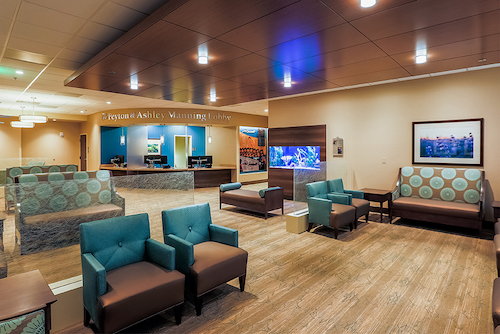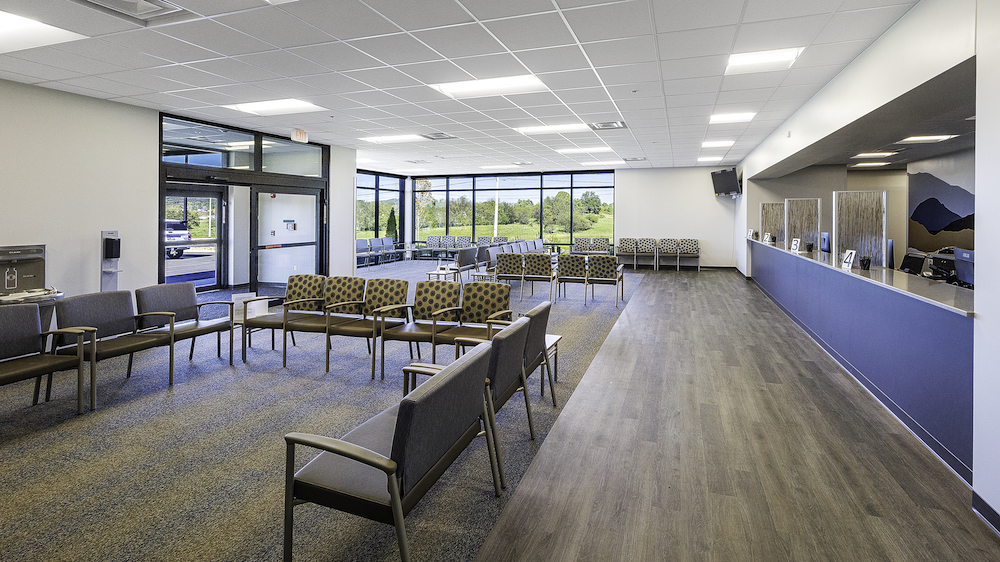
by Colleen Riordan, Johnson Architecture
When it comes to healthcare facilities, great design is more about the experiences of those who interact within the space than about an innovative façade.
My healthcare clients include two major health systems and seven hospital campuses, and I have concepted plans for freestanding facilities like orthopedic and urgent care clinics. Despite the differences in size, scope, or specific patient care to be provided, there is a common theme or goal with all the projects: to construct spaces that allow providers to efficiently and effectively serve their patients in a comfortable setting that evokes a positive experience not only for the patients, but for the providers themselves.

Evaluate operations first
The first step is usually understanding the specific tasks that need to transpire and evaluating how to most efficiently situate patient rooms, doctor offices and diagnostic services to move patients smoothly throughout the space. This can be referred to as spatial, experiential or human-centered design, but for us, all good design should include an evaluation of operations and the overall user experience. That hasn’t always been the case in healthcare, but clients are now reimagining how they want their facilities to flow and feel.
Designing distinct spaces
For a primary care facility, we explore the entire patient experience and determine where patients check in and wait, consult with a nurse, and receive examinations. The design team ponders the flow of patient care. Often patients who are visiting for lab work can wait in a distinct area and provide a sample or do a test without mixing with acutely ill patients or meandering through the practice.
Provider areas are key, where each physician may have a pod or hall that includes an office, several exam rooms, and a nurse’s station. A doctor and staff will have their own area to triage, then treat patients instead of walking to multiple exam rooms across the facility.
An office’s diagnostic technology, such as X-rays or MRIs, may need to be centralized for efficient access and function, but future upgrades need to be factored in as well. After modernizing several hospitals and outpatient facilities, we recommend installing these massive diagnostic machines along the outside perimeter. When they need to be replaced, only one wall needs to be removed instead of reworking the entire structure.
Comfortable rather than clinical settings
While cleanliness is important, and materials may be selected based on hygienic durability or sustainability, clients often want to provide a less clinical and more comfortable ambiance for patients, providers and staff. Spacious waiting rooms reflect biophilic design with comfortable and sustainable furniture, natural light, greenery, artwork of nature scenes, and fish tanks, contributing to holistic healthcare.

Further, research indicates memory care patients benefit from daylight, even indoors. For The Pat Summitt Clinic, which treats Alzheimer’s patients, our design incorporates lighting that mimics natural windows with partial shutters and the sense of daylight shining through.
Facility managers realize patient care goes beyond medical treatment to encompass the entire experience from the time a patient arrives until leaving. Patients move through the evaluations and treatments efficiently while feeling welcome and comfortable. Employees are also considered since there is a lot of competition for great providers and support staff who look beyond salary when choosing where to work and achieve a healthier work-life balance.
To recruit and retain top medical talent, clients are requesting comfortable working and leisure spaces for staff from elevated lounges to courtyards. For example, we are working on a project for Cherokee Health Systems that includes a wellness garden for employees and four large clerestory windows that channel diffused northern sunlight into the core of the single-story, 26,000-sq.-ft. building, connecting internal spaces to the outside.
As more healthcare employers develop their own freestanding facilities, they also have more flexibility to design the space on their terms. While clients want the facility to reflect their brand, both inside and outside, they also are investing more in having a comfortable and welcoming space where patients, providers and staff can spend time and leave with a positive impression of their experience.

Colleen Riordan serves as the healthcare projects manager for Johnson Architecture, a full-service firm offering planning, architectural and interior design services for a variety of facility types, including commercial, education and healthcare.
